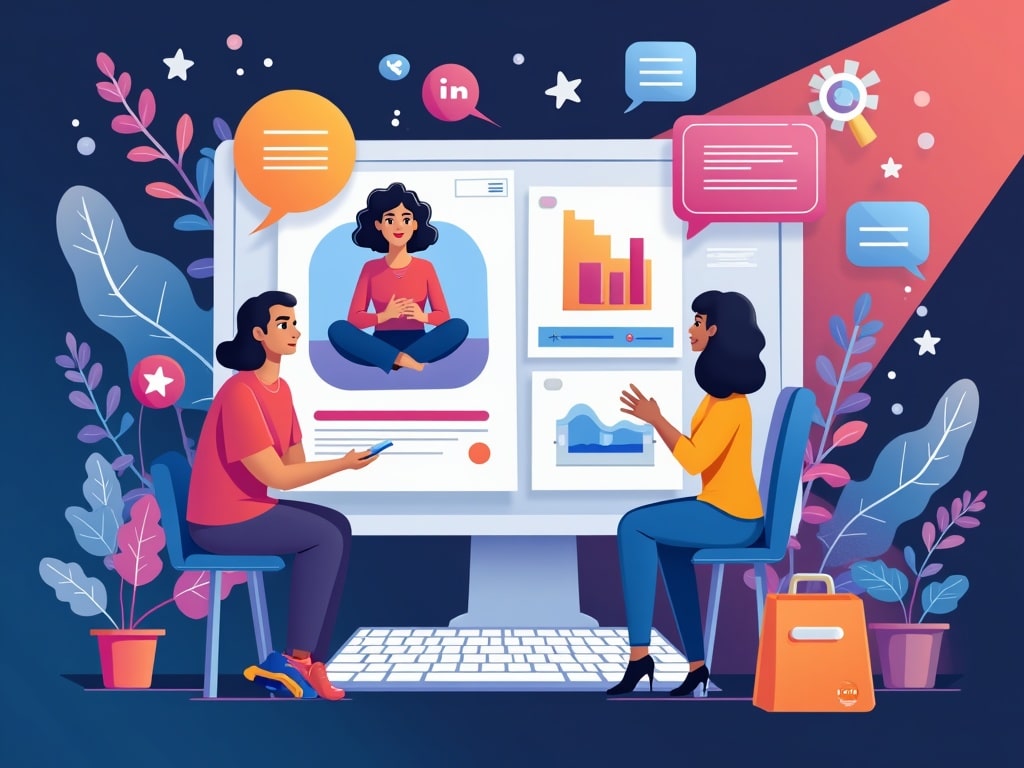Unlocking Innovation: Customer Discovery for New Feature Success
Imagine pouring weeks, even months, into developing a groundbreaking new feature, only to watch it sink without a trace upon release. The crickets chirp, user adoption flatlines, and your team is left wondering, What went wrong? The answer often lies in a lack of robust customer discovery. Customer discovery is the bedrock of successful product development, especially when it comes to launching something new. It’s the process of deeply understanding your target audience, not just their demographics, but their pains, needs, desires, and workflows.
Why Customer Discovery is Crucial for New Features
Customer discovery is more than just a box to check on your product development timeline. It's a continuous loop of learning, validating, and iterating which dramatically increases your chances of launching features that resonate. Here's why it's so vital:
**Reduces the Risk of Building the Wrong Thing:Building a feature based on assumptions or internal opinions is a gamble. Customer discovery mitigates this risk by providing concrete data about what users actually want and need.
**Ensures Product-Market Fit:A successful feature solves a real problem for a specific group of people. Customer discovery helps you define your target market and tailor the feature to their unique requirements, leading to better product-market fit.
**Saves Time and Resources:It's far more efficient to identify potential issues and make adjustments early in the development process than to rework a completed feature after launch. Customer discovery helps you avoid costly mistakes and wasted effort.
**Uncovers Hidden Needs and Opportunities:You might think you know what your customers want, but often, they have needs they haven't even articulated themselves. Customer discovery can reveal these hidden needs and uncover innovative opportunities.
**Boosts User Adoption and Engagement:Features built with customer input are inherently more likely to be adopted and actively used. When users feel heard and understood, they’re more engaged with your product.
The Customer Discovery Process: A Step-by-Step Guide
Customer discovery isn't a one-size-fits-all process, but here's a general framework you can adapt to your specific needs:
1. Define Your Assumptions
Before you start talking to customers, take some time to articulate your assumptions about the new feature. What problem are you trying to solve? Who is it for? How will it improve their lives? Writing down these assumptions will give you a baseline to test and validate (or invalidate) during the discovery process.
**Example:*We assume that our project management software users are frustrated by the lack of a built-in time tracking tool. We believe a simple, integrated time tracker will help them better manage their time and bill clients more accurately.*
2. Identify Your Target Customer Segment
Who are the ideal users for this new feature? Be as specific as possible. Consider their demographics, job roles, technical skills, pain points, and existing workflows. Don't try to target everyone; focus on the customers who will benefit the most from the feature.
**Example:*Our target customer segment is freelance project managers and small agencies (5-10 employees) who use our project management software daily and bill clients hourly.*
3. Choose Your Customer Discovery Methods
There are numerous methods you can use to gather customer feedback. The best approach will depend on your specific goals, target audience, and resources. Here are some popular options:
**Customer Interviews:One-on-one conversations with customers are invaluable for gaining in-depth insights into their needs, motivations, and pain points. Prepare a list of open-ended questions that encourage them to share their experiences and opinions.
**Surveys:Surveys are a great way to collect quantitative data from a larger group of customers. Use them to validate your assumptions and identify trends. Keep your surveys short and focused to maximize response rates.
**Focus Groups:Bringing together a small group of customers for a moderated discussion can generate valuable insights and uncover unexpected perspectives.
**Usability Testing:Observe users as they interact with a prototype or early version of the feature. This will help you identify usability issues and areas for improvement.
**Analytics Review:Analyze data from your existing product to understand how users are currently solving the problem you’re trying to address with the new feature. This can reveal valuable insights into their behavior and preferences.
**A/B Testing:Once you have a basic version of the feature, A/B testing can help you compare different variations and identify the most effective design.
**Review Analysis**: Scour app store reviews, social media, and industry forums for mentions of the problem your feature aims to solve. Pay attention to both positive and negative feedback.
**Competitor Analysis:Analyze your competitors' features and how their users are reacting to them. What are they doing well? What are they missing? This can provide valuable insights and inspiration.
4. Conduct Your Research and Gather Feedback
Now it’s time to put your plan into action! Schedule interviews, send out surveys, run usability tests – whatever methods you've chosen. The key is to listen actively and empathetically to your customers. Don't interrupt them or try to lead them to a particular answer. Focus on understanding their perspective.
**Pro Tip:Record your interviews (with permission, of course) so you can review them later and capture any nuances you might have missed during the conversation.
5. Analyze and Synthesize Your Findings
Once you've gathered enough data, it's time to analyze your findings and identify patterns and insights. Look for common themes, pain points, and unmet needs. What are customers really struggling with? What solutions are they currently using? What are their biggest frustrations?
**Affinity mappingis a useful technique for organizing and synthesizing qualitative data. Write each key insight on a separate sticky note and then group them into related categories.
6. Iterate and Refine Your Feature Based on Feedback
Based on your analysis, refine your assumptions and adjust your feature accordingly. This might involve making changes to the design, functionality, or target audience. Don't be afraid to pivot if your initial assumptions turn out to be wrong. The goal is to build a feature that truly meets the needs of your customers.

7. Validate Your Changes
After making changes, validate your revised feature with customers again. This iterative process of building, testing, and learning is crucial for ensuring that you're on the right track. Continuous feedback is crucial for success.
**Run another round of usability tests:See if the changes you made have improved the user experience.
**Conduct a follow-up survey:Ask customers if the new feature addresses their needs more effectively.
Essential Questions to Ask During Customer Discovery Interviews
The quality of your customer discovery depends heavily on the questions you ask. Here are some examples of open-ended questions that can help you gather valuable insights:
**What are your biggest challenges when it comes to [related task]?(Focus on uncovering pain points).
**Can you walk me through your current process for [related task]?(Understand their workflow).
**What tools do you currently use to [related task]? What do you like and dislike about them?(Competitor analysis and feature comparison).
**If you could wave a magic wand and solve one problem related to [related task], what would it be?(Uncover unmet needs and desires).
**How would a new feature like this impact your daily workflow?(Assess potential impact and usability).
**What are your expectations for a feature like this?(Understand their needs and expectations).
**What would make this feature a must-have for you?(Identify key features and differentiating factors).
**How much time or money would this feature save you?(Quantify the value proposition).
**How would you describe this new feature to a colleague?(Test your messaging and value proposition).
Common Mistakes to Avoid During Customer Discovery
Even with a solid plan, it's easy to make mistakes during customer discovery. Here are some common pitfalls to avoid:
**Talking Too Much, Listening Too Little:The goal of customer discovery is to learn from your customers, not to sell them on your idea. Resist the urge to dominate the conversation and focus on active listening.
**Asking Leading Questions:Avoid questions that steer customers towards a particular answer. For example, instead of asking Do you think this feature would be helpful?, ask How would this feature impact your workflow?
**Only Talking to Existing Customers:While existing customers are a valuable source of feedback, don't limit yourself to them. Talk to potential customers who haven't yet used your product to get a broader perspective.
**Ignoring Negative Feedback:It's tempting to focus on positive feedback and dismiss negative comments, but negative feedback is often the most valuable. It can help you identify potential problems and improve your feature.
**Failing to Document Your Findings:Keep detailed notes of your customer interviews, surveys, and usability tests. This will help you analyze your data and track your progress.
**Building in Isolation After Discovery**: Customer discovery isn't a one-time event. It should be integrated into your ongoing development process. Share your findings with your team and involve them in the iterative process of building and refining your feature.
The Long-Term Benefits of Customer Discovery
While the initial effort of customer discovery may seem time-consuming, the long-term benefits are substantial:
**Increased Revenue:By building features that resonate with customers, you'll drive user adoption, engagement, and ultimately, revenue.
**Reduced Development Costs:Avoiding costly mistakes and building the right features the first time will save you time and money in the long run.
**Improved Customer Loyalty:When customers feel heard and understood, they're more likely to be loyal to your brand.
**Enhanced Innovation:Customer discovery can spark new ideas and uncover hidden opportunities for innovation.
**Stronger Product-Market Fit:Focusing on solving real problems for specific customers will lead to better product-market fit and greater long-term success.
In conclusion, customer discovery isn't merely a preliminary step; it's the engine that drives product innovation and ensures lasting success. By embracing a customer-centric approach, you'll not only build better features but also create a stronger, more engaged customer base. So, put down the assumptions, pick up the phone, and start listening to your customers – your next breakthrough feature awaits.

